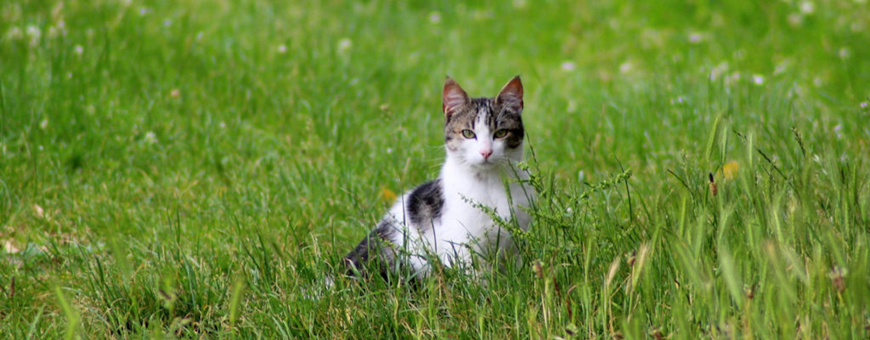Nutrition
The Best Food for Your Cats

by Dr. Abby Huggins Mowinski, DVM
Cats are not small dogs.
This mantra is repeated at veterinary schools and conferences across the world – and it is as applicable to feline nutrition as it is to any other medical issue. Yet, because cats don’t always make the best “test subjects” (anyone who owns cats knows that they do whatever they darn well please, whenever they darn well please…usually at 2:46 in the morning), we are forced to extrapolate much of what we know and what we do from canine medicine.
This isn’t always appropriate, especially when it comes to nutrition. Cats are obligate carnivores, requiring up to twice as much protein as dogs of the same size. A professor of mine once said that the only carbohydrate a cat is designed to eat is the tiny grain of rice the mouse was eating before it became dinner – and that has always resonated with me. Likewise, cats lack certain enzyme pathways that allow other species to convert certain essential nutrients like taurine, Vitamin A, niacin, arginine and arachidonic acid. Hence, these nutrients all need to be provided in higher levels in feline diets to prevent the development of serious health issues.
As pet owners, many of us have brought this ancestrally active hunting species into our homes as indoor pets and have asked them to adapt to a free-fed kibbled diet. I have. My two senior kitties, O.G. and Mason, have lived their entire lives indoors and have eaten dry cat food throughout their 18 years. While this is not inherently wrong, we can do better.
Commercial dry cat food, on average, is typically formulated as 46-76% carbohydrates, 18-32% protein (and, not all of this is meat protein), and 8-22% fat. Why? Because carbs are inexpensive, readily available and offer a longer shelf-life. Remember, cats are obligate carnivores – they have been designed by nature to require meat protein in their diet. It is also many times easier to feed a kibbled cat food – it can be left down throughout the day and readily refilled.
What we compromise, however, with these average cat food diets, is the health of our pets. Excessive weight gain, dull coat quality, and an increased risk for diabetes mellitus may all be improved upon with a transition to a diet which more closely resembles the feline’s ancestral diet and is biologically balanced for their unique nutritional requirements.
Nulo Pet Food offers industry-leading animal meat protein content in all 7 of its cat kibble recipes as well as in the 12 canned recipes. Additionally, all kibble (dry) recipes are grain-free and canned (wet) formulas are carrageenan-free.
I have a special place in my heart for senior pets, and I have been completely satisfied (thrilled, in fact), by my own old guys’ success on the Nulo Indoor Cat Duck & Lentils Recipe. A 2011 longitudinal nutritional study revealed that cats fed a diet supplemented with anti-oxidants, fatty acids, and a prebiotic (specifically vitamin E, beta-carotene, n-3 and n-6 fatty acids, and chicory root as a prebiotic source) lived an average of 11 months longer and had improved health compared to those on a standard diet.
Nulo feline diets contain every single one of those aforementioned supplements, in addition to the essential nutrients like taurine and vitamin A. All kibble recipes also contain the patented BC30 probiotic which helps maintain a healthy natural bacterial flora. Personally, I find the small disk shape of the kibble is especially appreciated by my senior dudes and me, as it is easier for them to eat and reduces the frequency of “cat yuck” (my kids’ name for undigested regurgitation after gobbling). The higher protein content and no filler also yields less solid waste in the litter box, which is appreciated by all.
By improving the quality and design of our cats’ diet, we can help them live longer, healthier, and fuller lives. More 2:46 AM wake up calls, cold noses in my ear, and sitting on my keyboard while I’m trying to type? I’ll take it! Nulo: Healthier Together.
